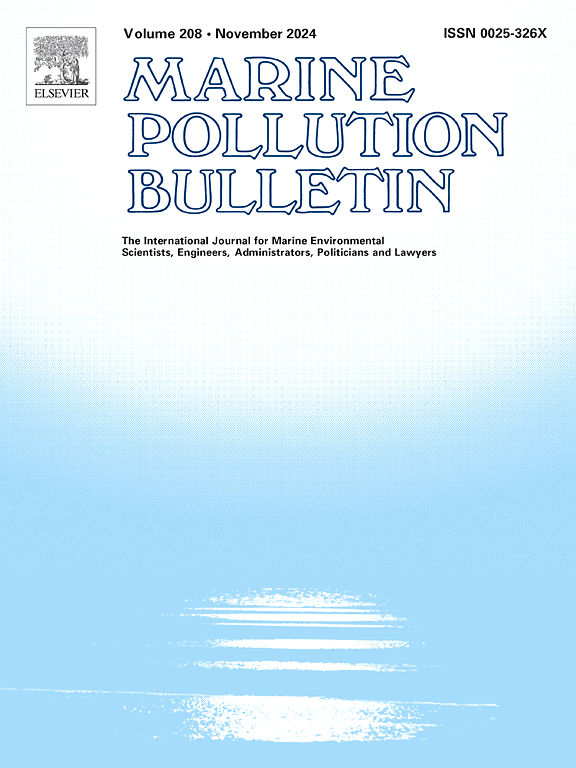Effects of copper and cadmium, isolated and combined, in the survival and behavior of Eurytemora affinis (Copepoda)
IF 5.3
3区 环境科学与生态学
Q1 ENVIRONMENTAL SCIENCES
引用次数: 0
Abstract
The excess of metals released in the environment is of significant concern, and assessing metallic mixtures can be tricky. Copepods are an important link between the producers and higher trophic levels, and their use in ecotoxicology is still scarce compared to other organisms from zooplankton. We evaluated the effects of copper (Cu) and cadmium (Cd), isolated and combined, on nauplii and adults of euryhaline Calanoida copepod Eurytemora affinis from the Seine estuary. The effects of the mixtures were modeled with MixTox, using mortality as endpoint, and the behavior of the adults was evaluated using DanioVision. The nauplii were more sensitive to the metals than adults, especially when exposed to Cd. Regarding the mixtures, the best model to explain the interactions in both stages was the independent action, with synergism in nauplii and antagonism in adults. Synergism was observed in all metallic mixtures to nauplii, increasing with the increase of metals while antagonism was observed in all combinations in adults but with no clear pattern of response related to the metal concentration. Our data suggest that Cd contributed to Cu toxicity in nauplii, but this was not observed in adults. Overall, the copepod's velocity was not significantly affected by the contaminants at the concentrations evaluated. Our data underline the importance of considering (i) the effect of metallic mixtures (ii) in different stages of copepods.

求助全文
约1分钟内获得全文
求助全文
来源期刊

Marine pollution bulletin
环境科学-海洋与淡水生物学
CiteScore
10.20
自引率
15.50%
发文量
1077
审稿时长
68 days
期刊介绍:
Marine Pollution Bulletin is concerned with the rational use of maritime and marine resources in estuaries, the seas and oceans, as well as with documenting marine pollution and introducing new forms of measurement and analysis. A wide range of topics are discussed as news, comment, reviews and research reports, not only on effluent disposal and pollution control, but also on the management, economic aspects and protection of the marine environment in general.
 求助内容:
求助内容: 应助结果提醒方式:
应助结果提醒方式:


